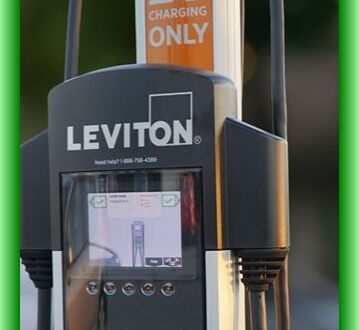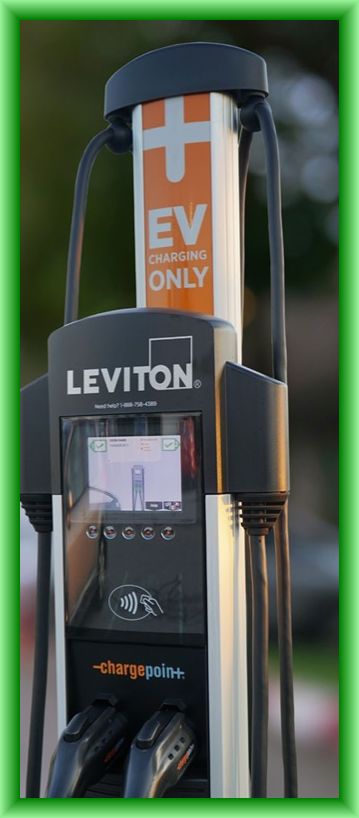Electrical Contractors and EV Chargers
Electrical Contractors and EV Chargers
The California Energy Commission dropped a bomb on the building construction industry with new EV charger requirements. What the CEC has done is not a “measured” approach to EV charging infrastructure. Every new commercial or multi- family project in the state must provide ready-to-use EV charging for a minimum of 25% of the parking spaces on the project. At 40 amps per charger, the increase in the electrical service and distribution costs are huge. Currently there are zero allowed exceptions to these requirements.
The magnitude of these requirements is going to create many issues on many projects. It is going to be a challenge for electrical contractors, engineers, building officials, and building owners.
For design teams and building officials, the code language can be confusing. Since this code release is the very first one with these requirements, there are no historical interpretations that building officials, plan reviewers, or inspectors can fall back on. It is likely that interpretations will vary from one jurisdiction to the next.
EV Chargers – The Challenges

At first glance and EV charger sounds like just another device to run power to. However, electrical contractors and EV charger installations, can become a quagmire of unforeseen issues that should be considered.
- The EV Charger industry, as a whole, is in the infancy stage. The new code requires large numbers of EV chargers for many projects. Most EV Charger vendors have not dealt with large volume installations. My experience is that they don’t even have the staff to deal with the coordination and design assistance for what is now a mandatory California requirement.
- The building owner is going to have to learn to manage an expensive investment that they have never had to deal with in the They are going to have to live with the hardware and software for the life of the building.
- A&E teams may think they can specify a “generic” EV charger system in a design-bid-build project, but this will leave many serious issues to resolve during construction.
- The code allows some degree of automatic load management systems (provided by some EV charger vendors) but these systems will need to be carefully engineered and may also be proprietary to specific vendors.
- Owners will be looking for rebates and incentives. Who takes ownership of the coordination and who will make the applications for the rebates? Typically, there is a limited purchasing window in order to receive the rebates. Who’s responsible if the equipment isn’t ordered on time and the owner loses the rebate?
- A recent study indicated that between 25% of EV chargers in California are not working at any given time due to manufacturer or software issues. How does the electrical contractor protect themselves from liability and costs during the warranty period with the poor track record of this equipment? One option is to review the manufacturer’s
- Chargers provide a ripe opportunity for vandalism. Who pays for this during the warranty period?
- Networked EV charger systems will require a network gateway typically using cellular data, such as provided by ChargePoint, and others.
- EV Charger vendors can provide various levels of service, from just selling you the equipment to complete turnkey systems. The key point then becomes, “Who gets the proceeds from the sale of the energy?”. The property owner or the charger company? The vendors have different business models. How the income is distributed and who is paying for how much of the installation is a question that needs to be answered early in the design phase.
- EV charger system will require some form of service contract.
The Code Terminology

EV Capable: Means that you must provide the electrical panel space, and empty conduit (no wire), and a termination box for a future 120 volt, 40 amp circuit. Label the panel for “Future EV Charger.”
EV Ready: A vehicle space which is provided with a 208/240 volt, 40 amp branch circuit; any necessary raceways, both underground and/or surface mounted; to accommodate EV charging, terminating in a receptacle or a charger.
EVCS Electric Vehicle Charging Station: One or more electric vehicle charging spaces served by electric vehicle charger(s) or other charging equipment allowing charging of electric vehicles.
EVSE Electric Vehicle Service Equipment: The conductors, including the ungrounded, grounded and equipment grounding conductors and the electric vehicle connectors, attachment plugs, and all other fittings, devices, power outlets or apparatus installed specifically for the purpose of transferring energy between the premises wiring and the electric vehicle.
Level 1 Charger: A standard 120 volt, 20 amp receptacle used for charging an EV.
Level 2 (Low Power) Charger: A 208/240v volt, 40 amp receptacle, or charger, used for EV charging.
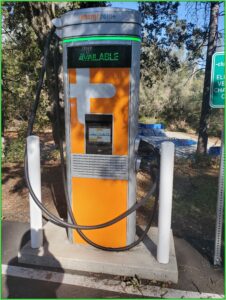
Level 3 DCFC Charger
Level 3 Direct Current Fast Charger (DCFC): A 480 volt fast charging system. Amperage may vary.
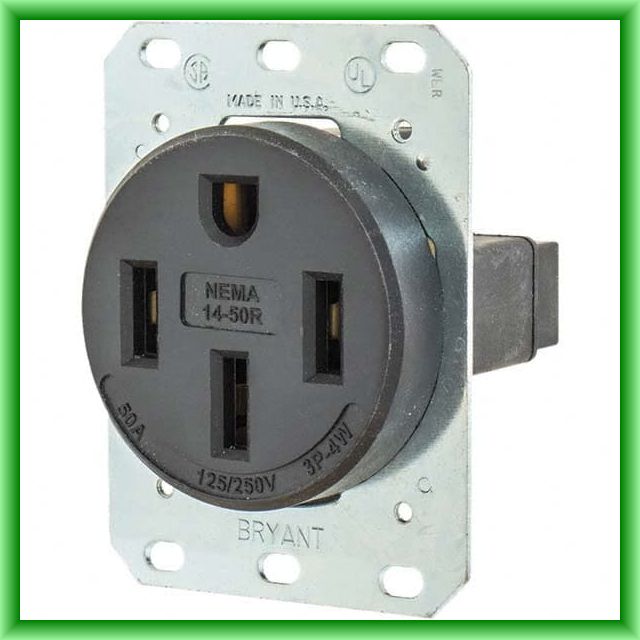
NEMA 14-50 Receptacle

Level 2 Low Power EVCS
Residential Mandatory Measures, Including Hotels and Motels
Exceptions: Currently the only exceptions to any of the EV charging requirements are limited to “costly impact to local utility infrastructure”. There are no exceptions for any building types regardless of the potential for lack of use (for example, church parking lots).
Section 4.106.4 Electric Vehicle Charging for New Construction.
1. Single family residences: Essentially no changes to the 2019 code for single-family residences. Rough-in only a 1” conduit, junction box and panel space for future 240 volt, 40 amp circuit.
2. New Multi-family Dwellings and Hotels and Motels, Less than 20 dwelling Units:
- EV Capable: Ten (10) percent of the total number of parking spaces on a building site, provided for all types of parking facilities, shall be electric vehicle charging spaces (EV spaces) capable of supporting future Level 2 EVSE.
- EV Ready: Twenty-five (25) percent of the total number of parking spaces shall be equipped with low power Level 2 EV charging receptacles or chargers.
3. New Multi-family Dwellings and Hotels and Motels, 20 or more dwelling Units:
- EV Capable & EV Ready requirements are the same as less than 20 units (above).
- 5% of the total parking spaces must be Level 2 EVSE.
Summary
For less than 20 dwelling units, electrical infrastructure for 35% of all parking spaces. For 20 or more dwelling units, electrical infrastructure for 40% of all parking spaces.
Infrastructure Issues for Residential Projects
Single Family Residences: The only infrastructure issue is the roughing-in a single 40 amp circuit.
Multi-Family Projects: The infrastructure needs to be discussed and agreed upon by the owner.
Option 1
Design provides simple 208/240, 40amp plug-in receptacles for the number required.
1. Where will these be located in relation to the parking lot and the electrical service?
2. Will these receptacles be metered? If so, where will meters be located?
3. If metered how will the landlord back-charge tenants for the power usage?
4. If not metered, how will landlord recoup power costs? Consider RFID cards for tenants.
5. One possibility is to feed receptacles from apartment sub-panels. However, this limits access to EV charging for other tenants. In this case utility meter for each tenant might be considered.
Option 2
Instead of receptacles, provide networked Level 2 EVSE chargers, such as ChargePoint, etc.
1. How will these be evenly distributed on site?
2. If EVSE chargers, will these be OFCI, contractor furnished and installed, or vendor furnished and vendor installed?
3. If EVSE, owner needs to make a decision on the specific vendor during the design phase of the project due to the wide variations in vendor offerings, capabilities, costs, monitoring and billing, etc.
NonResidential Mandatory Measures
The 2022 CalGreen Code Mandatory Measures for non-residential projects has changed in its entirety. This section applies to all new non-residential buildings.
This does not apply to alterations or to an existing non-residential building. This is made clear in the Guide to the 2022 California Green Building Code published by ICC.
Beware, many jurisdictions are adding amendments to the CalGreen Code. The design team should always check the current and published Municipal Code for any possible additions or changes regarding EV charging requirements.
Section 5.106.5.3.1 EV Capable: EV capable spaces shall be provided in accordance with Table 5.106.5.3.1.
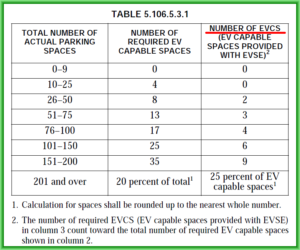
Table requires 20% or parking spaces to be EV capable (up to 200 spaces), plus roughly 5% provided with EVSE.
Section 5.106.5.3.2 adds that the required chargers may be Level 2 or Direct Current Fast Charging (DCFC) chargers (480 volt power, such as a Tesla Supercharger). It further notes that at least one of the chargers must be a Level 2 charger.
Section 5.016.5.4. EV Charging: Medium and Heavy Duty: The 2022 code has added all-new requirements for new grocery stores, retail stores, and warehouses with planned off-street loading. Note that this is in addition to the chargers required for the associated parking lots.
The code requires the following infrastructure to be installed for new buildings in this category. This includes raceways, service panels, transformers, distribution, and panels appropriately labeled for future EV charging circuits.
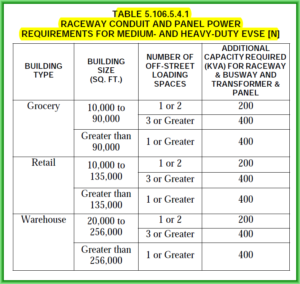
Note that these are rough-in requirements only for power service and panel sizing. Installation of chargers is not required.
The CalGreen Tiers
The CalGreen Tier 1 and Tier 2 voluntary measures add additional requirements to all of the above projects. In the interest of brevity, we will not expand on these requirements in this article. You can view the requirements in the code itself here.
ADA and EV Charger Compliance
Compliance with EVCS ADA requirements in California is primarily governed by Section 11-B of the
California Building Code. Here are the requirements.
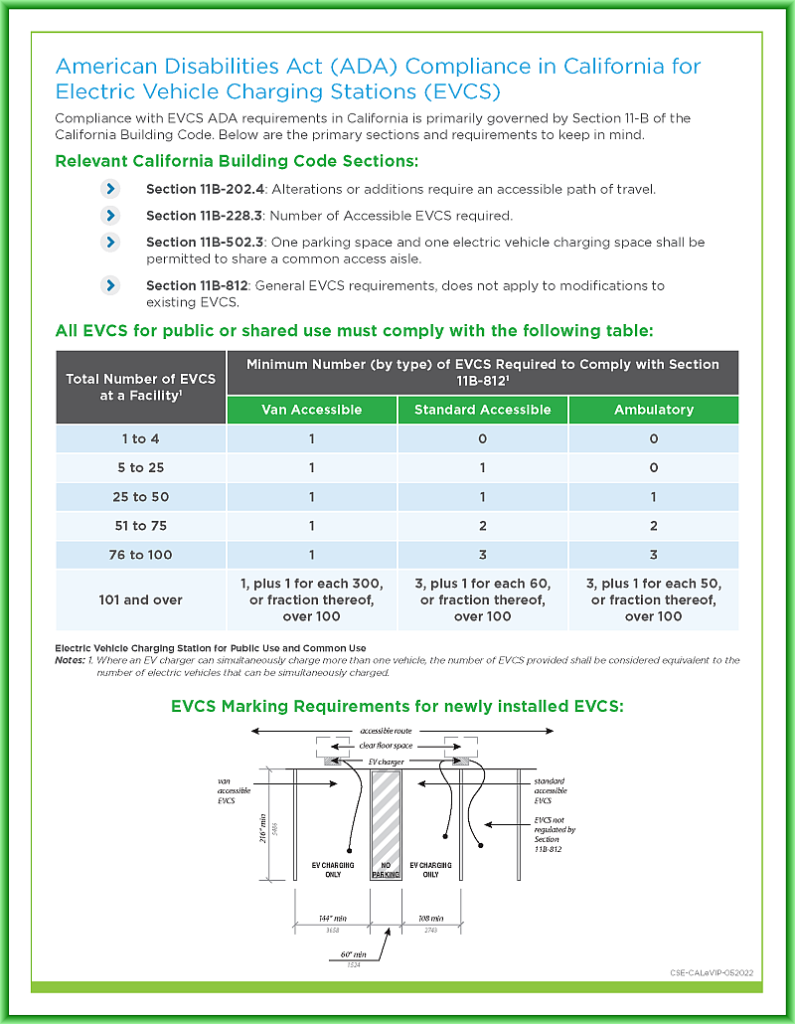
The TakeAways for Electrical Contractors
- Contractually, EV charging systems represent a wide variety of liabilities for electrical contractors. As with the code itself, there is no historical precedence to the contractual separation of responsibilities and liability. The next time to you get a project with a large number of EV chargers, it might be a good time to give your attorney a call to sort out your contractual exposure and liability limits.
- Once you have the contract, make sure the GC, owner, and design team understand what you are responsible for, and what you are Making this clear at the outset of the project will help ensure that the owner and design team understand their obligations.
- In the case of Owner Furnished, Contractor Installed (OFCI) chargers, beware of any vendor substitutions by the owner from the base bid. Charger types, capabilities, and requirements can vary significantly, up to and including, changing the number of chargers and their layout on the site.
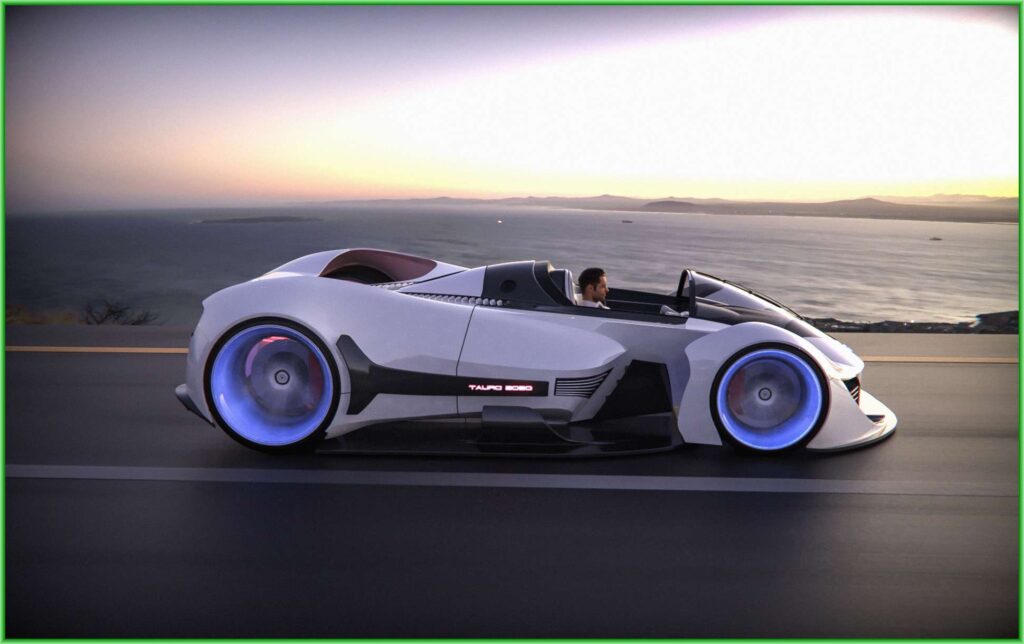
Those who have worked with me, or have read information on my website, know that I am always happy to share my knowledge on the CalGreen Code. However, the EV charging requirements have created such a flood of information requests, that it is negatively affecting my business. I can no longer accept inquiries on the EV charging requirements of the CalGreen Code. Nor do I wish to act as a consultant on this subject.
If you have questions on this code I suggest you try calling the California Energy Commission, Building Energy Efficiency Standards, at 800-772-3300. Or you can email them at title24@energy.ca.gov.


Gary Welch has over 35 years experience in the field of sustainable building design. He is the CEO of CalGreen Energy Services. Gary is an ICC Certified CalGreen Special Inspector and Plans Examiner.

